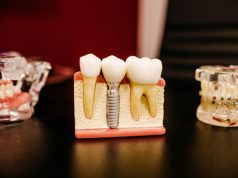
Let’s be honest—most guys are great at going hard but terrible at slowing down. Whether you’re crushing it in the gym, hustling through long work hours, or juggling family life, recovery is usually the first thing that gets sacrificed. But here’s the truth: you don’t get stronger, sharper, or healthier from the grind—you get those gains when you Build a Recovery Routine that supports your body and mind every day.
It’s the missing piece that separates the burnt-out from the balanced. So let’s break down how to build a recovery routine that hits all the key areas—sleep, mobility, and chill-out time—so you can perform like a beast and feel like a human.
1. Prioritize Sleep Like It’s a Workout
Sleep is your body’s ultimate recovery tool. It’s when your muscles rebuild, hormones balance, and your brain clears out mental junk. You can lift all the weights in the world, but if you’re only getting five hours of broken sleep, you’re basically spinning your wheels.
Here’s how to level up your sleep game:
- Set a real bedtime. Yeah, it sounds boring—but your body loves consistency. Try to go to bed and wake up at the same time, even on weekends.
- Create a wind-down zone. Dim the lights, ditch the phone, and cool down your bedroom. Your brain needs a cue that it’s time to chill.
- Cut the caffeine cutoff. No coffee or energy drinks after 2 PM. You’ll thank yourself when you’re not wide-eyed at midnight.
- Try sleep tools. Weighted blankets, magnesium, or a white-noise app can be game-changers if you struggle to switch off.
🧠 Pro tip: Sleep is the cheapest and most effective “supplement” you’ll ever take. Treat it like training—track it, tweak it, improve it.
2. Add Mobility Work (So You Don’t Move Like a Rusty Door)
If your recovery plan doesn’t include mobility, you’re missing out. Stretching and mobility work aren’t just for yoga fans—they’re the secret to moving better, lifting more, and staying pain-free long-term.
Here’s how to make it simple (and doable):
- Start with 10 minutes a day. Morning or post-workout, hit the hips, shoulders, and spine—your main “traffic jams.”
- Use tools, not excuses. Foam rollers, lacrosse balls, resistance bands—cheap, portable, and effective.
- Try a mobility app or YouTube session. Search “10-minute mobility routine” and follow along. No thinking required.
- End your workouts with 3 minutes of movement. Just a few hip openers, spinal twists, or ankle rolls can make a huge difference over time.
💡 Pro tip: Consistency beats intensity. Ten minutes daily is better than one hour once a month.
3. Schedule Real Chill-Out Time
This is the part most men ignore—intentional rest for your mind. Recovery isn’t just about the body; your nervous system needs downtime, too. Stress kills gains, focus, and motivation faster than anything else.
Try adding one of these recovery habits to your week:
- Zone out without guilt. Watch a show, take a walk, play guitar, or cook. Doing something you enjoy resets your mental state.
- Breathe or meditate. You don’t need incense—just sit still for five minutes and focus on your breath. It’s a brain reboot.
- Get outside daily. Sunlight boosts mood, sleep quality, and testosterone. Morning walks are free therapy.
- Book a weekly “off switch.” Sauna, massage, float tank, or even just a no-phone afternoon. Make relaxation a routine, not a reward.
🔥 Pro tip: Don’t wait for burnout to rest. Build small recovery moments into every day.
Putting It All Together
Building a recovery routine isn’t complicated—it’s about structure and intention. Here’s a simple weekly plan:
Daily:
- 10 minutes of mobility
- 7–8 hours of sleep
- 5 minutes of breathwork or quiet time
Weekly:
- One full rest day (no workouts)
- One longer “chill session” (massage, nature, whatever refuels you)
Stick with it for 30 days and see how your energy, focus, and workouts change. The goal isn’t to do more—it’s to recover better, so you can do everything else better.
Build a Recovery Routine Key Takeaways
A solid recovery routine makes you stronger, sharper, and more resilient.
It’s not about being lazy—it’s about playing the long game.
Sleep like a pro, move daily, and give yourself permission to just breathe.
Because when recovery becomes part of your lifestyle, the grind stops feeling like a grind—and starts feeling like progress.






